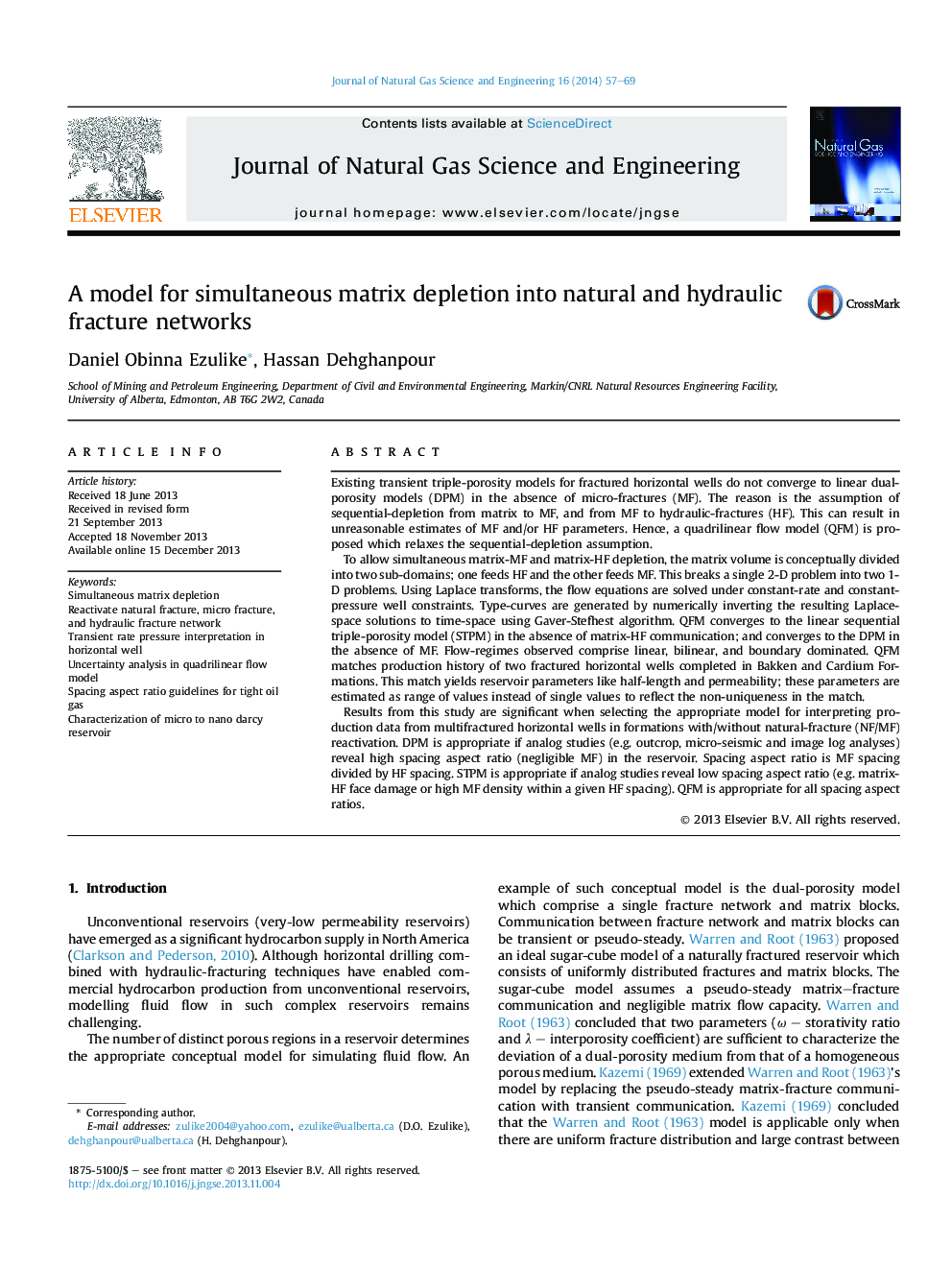| کد مقاله | کد نشریه | سال انتشار | مقاله انگلیسی | نسخه تمام متن |
|---|---|---|---|---|
| 1758096 | 1523024 | 2014 | 13 صفحه PDF | دانلود رایگان |
• We propose a transient quadrilinear flow model to characterize tight reservoirs.
• This model allows simultaneous flow from matrix to natural and hydraulic fractures.
• It converges to existing linear dual porosity model at high spacing aspect ratios.
• It converges to existing linear triple porosity model at low spacing aspect ratios.
• Application to field data estimates natural fracture intensity in tight reservoirs.
Existing transient triple-porosity models for fractured horizontal wells do not converge to linear dual-porosity models (DPM) in the absence of micro-fractures (MF). The reason is the assumption of sequential-depletion from matrix to MF, and from MF to hydraulic-fractures (HF). This can result in unreasonable estimates of MF and/or HF parameters. Hence, a quadrilinear flow model (QFM) is proposed which relaxes the sequential-depletion assumption.To allow simultaneous matrix-MF and matrix-HF depletion, the matrix volume is conceptually divided into two sub-domains; one feeds HF and the other feeds MF. This breaks a single 2-D problem into two 1-D problems. Using Laplace transforms, the flow equations are solved under constant-rate and constant-pressure well constraints. Type-curves are generated by numerically inverting the resulting Laplace-space solutions to time-space using Gaver-Stefhest algorithm. QFM converges to the linear sequential triple-porosity model (STPM) in the absence of matrix-HF communication; and converges to the DPM in the absence of MF. Flow-regimes observed comprise linear, bilinear, and boundary dominated. QFM matches production history of two fractured horizontal wells completed in Bakken and Cardium Formations. This match yields reservoir parameters like half-length and permeability; these parameters are estimated as range of values instead of single values to reflect the non-uniqueness in the match.Results from this study are significant when selecting the appropriate model for interpreting production data from multifractured horizontal wells in formations with/without natural-fracture (NF/MF) reactivation. DPM is appropriate if analog studies (e.g. outcrop, micro-seismic and image log analyses) reveal high spacing aspect ratio (negligible MF) in the reservoir. Spacing aspect ratio is MF spacing divided by HF spacing. STPM is appropriate if analog studies reveal low spacing aspect ratio (e.g. matrix-HF face damage or high MF density within a given HF spacing). QFM is appropriate for all spacing aspect ratios.
Journal: Journal of Natural Gas Science and Engineering - Volume 16, January 2014, Pages 57–69
